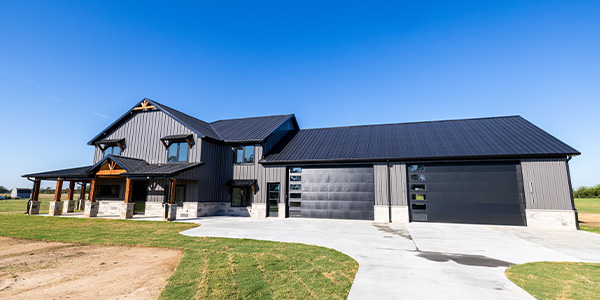Homebuyers
Living Small, Saving Big: What to Consider Before Buying a Tiny Home
December 25, 2024
Who needs a McMansion? Many Americans trying to save money on housing costs would consider living in a tiny home.
More than 50% of those surveyed said they would forgo extra square footage for a cheaper housing bill and less maintenance, according to a 2024 survey of more than 1,000 Americans by IPX1031, a financial services company.
Tiny homes, which generally max out at between 400 and 500 square feet, may save buyers quite a bit. They generally cost between $30,000 and $60,000, but can go up to $180,000 for a more luxurious, tiny residence, according to home services website Angi.
That’s compared to a median $399,900 for a typical single-family home in October, according to Zillow data.
Buyers can also generally save on maintenance bills as there is less square footage to heat or cool.
However, while there is no denying their financial appeal, there are considerations potential tiny homebuyers should consider before moving into one.
The first is whether tiny homes are permitted in their communities as well as if the home is built onto a foundation or if it’s on wheels. How the home is constructed can impact what sort of loan buyers may be able to use to finance the purchase.
Buyers should also understand that the home must generally include a kitchen, bathroom, and plumbing.
“Without these essential elements, the structure won’t be recognized as real property, which impacts its value and use,” said Peter Winscott, vice president of growth at the San Francisco-based construction company Villa Homes.
With or without wheels: The different types of tiny homes

Tiny homes are generally constructed on a foundation, so they’re not mobile, or they are on wheels, so they can be moved.
The ones that are built to remain where they are can sometimes be considered an accessory dwelling unit (ADU), depending on how it’s constructed. These are generally small, standalone homes built on the same plot of land as someone’s primary home.
“ADUs are typically built on permanent foundations, contributing stability, and often increasing property value,” said Whitney Hill, CEO of San Diego-based builder Snap ADU. “Tiny homes can be mobile or stationary but may lack the same investment return potential due to their mobility and differing building classifications.”
For example, a small guest house with a foundation that’s next to a traditionally sized main house would be considered an ADU.
Whereas a tiny home on wheels may be classified as a type of recreational vehicle (RV).
There may be zoning issues with tiny homes
It is important to pay close attention to local zoning laws when shopping around for a tiny home.
The smaller homes aren’t permitted in many areas. Even when they are allowed, the homes may need to be built onto a foundation to comply with local regulations.
“Zoning regulations vary widely and often prohibit tiny homes in residential areas unless they meet specific criteria, such as being on a foundation or having a certain square footage,” said Pete Evering, business development manager at property management company Utopia Management in San Diego.
How to get a mortgage to purchase a tiny home

One downside to purchasing a tiny home is that some lenders won’t offer mortgages for smaller amounts of money.
Buyers may be able to get an RV loan instead, especially if the tiny home will be on wheels, or arrange a personal loan rather than a mortgage.
Lenders who do offer the smaller loans may only do so for tiny homes that are constructed on foundations.
The pros and cons of living in a tiny home
Tiny homes are popular and for good reason. They are often much easier on the wallet than other, larger housing options.
Not only will the minimalist style help reduce buying unnecessary things, but the savings carry over elsewhere as well.
“Their smaller footprint means owners can spend less on utilities, upkeep, and repairs, which is appealing to those seeking a minimalist lifestyle with lower overall costs,” Evering said.
He added that the fixtures and appliances in tiny homes may also be smaller and easier to manage.
However, buyers also need to consider what it means to have less square footage. It could be difficult for couples to escape one another if they have to go into a virtual work call—or just want some personal space.
Homeowners also may not have as much storage options as they would in a single-family home with an attic and garage. That could make it more difficult to find places for boxes of holiday décor or seasonal sporting equipment.
And buyers need to ensure that these homes are permitted in their areas, which may require them to ask for an exception from a local zoning board.
“This limits placement options, making it essential for buyers to thoroughly research local laws before purchasing,” said Evering.






 Smart Moves Start Here.
Smart Moves Start Here.